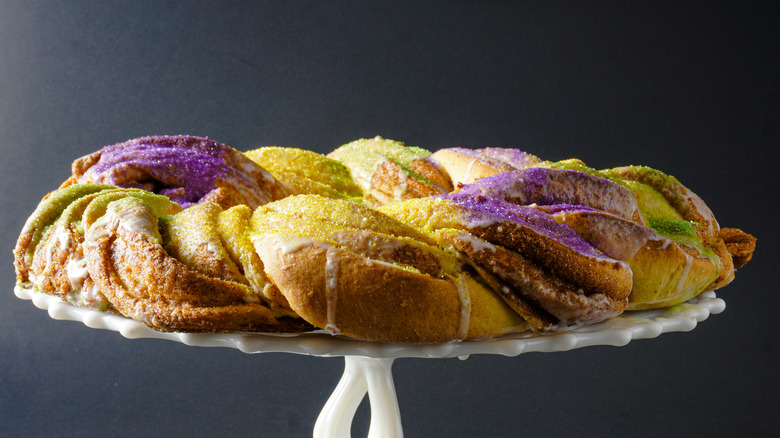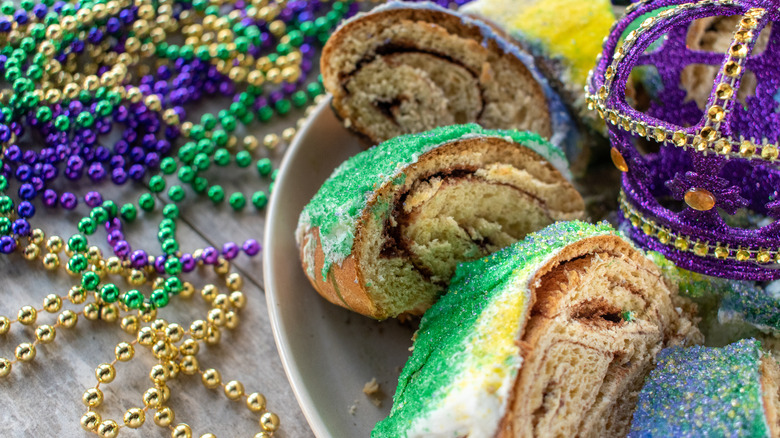The Old World Origins Of King Cake
Ah, Mardi Gras. What was once a one-day celebration of debauchery before the penitent and somber time of Lent has transformed into a three-week-long party of epic proportions. Their green-, yellow-, and purple-hued revelry calls to mind outrageously ornate papermaché floats, cheap plastic beads, and the not-quite-bread, not-quite-cake delicacy known as king cake.
Best described as a type of pastry, king cake has the flavor profile of an iced cinnamon roll, the texture of an enriched babka, and the appearance of a closed-circle Kringle. Typical king cake accompaniments are neon-colored sugar and "the baby," a minute plastic baby figurine that is buried within the tasty swirls of the king cake interior. Flavorful twists on the beloved pastry are often a throwback to other New Orleans delights, like praline pecan king cake or Bananas Foster King Cake. With these decadent desserts in mind, you may be forgiven for thinking that king cake's origins are firmly rooted in its crescent city home.
In fact, you may be surprised to know that this New Orleans favorite has a rather ancient, fairly French backstory.
A French favorite turned creole classic
The French forebearer of the New Orleans king cake is galette de rois, a round of puff pastry with an intricately cut top and an almond frangipane filling. In France, galette des rois is made in celebration of Epiphany, aka the Twelfth Night, when the Wisemen arrived on the scene to celebrate the new baby Jesus. It became popular in the Medieval ages, spreading throughout Spain and France. Shaped into a round to replicate the appearance of a crown, the cake commemorates the arrival of the Christian king.
Though it doesn't center around Fat Tuesday like New Orlean-style king cake, they both contain petite surprises. Like the plastic baby used in NOLA king cakes, the galette des rois has a trinket — often a fève (bean) — hidden within its luscious filling. The person who finds it gets to be "king for a day" and is required to host next year's party.
Still, while the New Orleans king cake shares traditions with the French version, the recipes are vastly different. One uses an enriched dough, the other a laminated dough, and the fillings have just as little in common. Instead, it more closely imitates the flavors and looks of the king cakes that come out of Hispanic countries, like Rosca de Reyes, Spain's king cake. Either way, these sweet traditions were eventually brought to New Orleans by the Spanish and French, leading to the creation of Mardi Gras and the creole version of King Cake.

